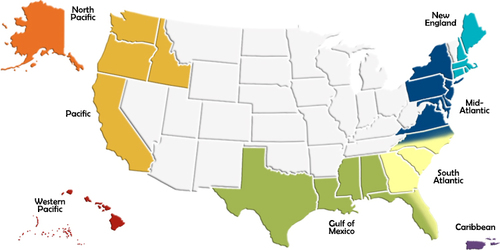NOAA Fisheries works with a number of federal, regional, and state and territorial partners to ensure the sustainable management of U.S. fisheries. Most marine fishery regulations implemented in United States federal waters (generally from 3 to 200 nautical miles from shore) are developed under the authority of the Magnuson-Steven Act, in conjunction with the eight regional fishery management councils.
The Councils’ primary responsibility is development of fishery management plans (FMPs). These FMPs must comply with a number of conservation and management requirements, including the 10 National Standards—principles that promote sustainable fisheries management.
The Magnuson-Stevens Fishery Conservation and Management Act (Magnuson-Stevens Act) is the primary law governing marine fisheries management in U.S. Federal waters. First passed in 1976, the Magnuson-Stevens Act fosters long-term biological and economic sustainability of our nation’s marine fisheries out to 200 nautical miles from shore.
In 1996, revisions to the laws governing the regional fishery management councils with the Sustainable Fisheries Act, made significant amendments to strengthen conservation with requirements to prevent overfishing and rebuild overfished fisheries.

